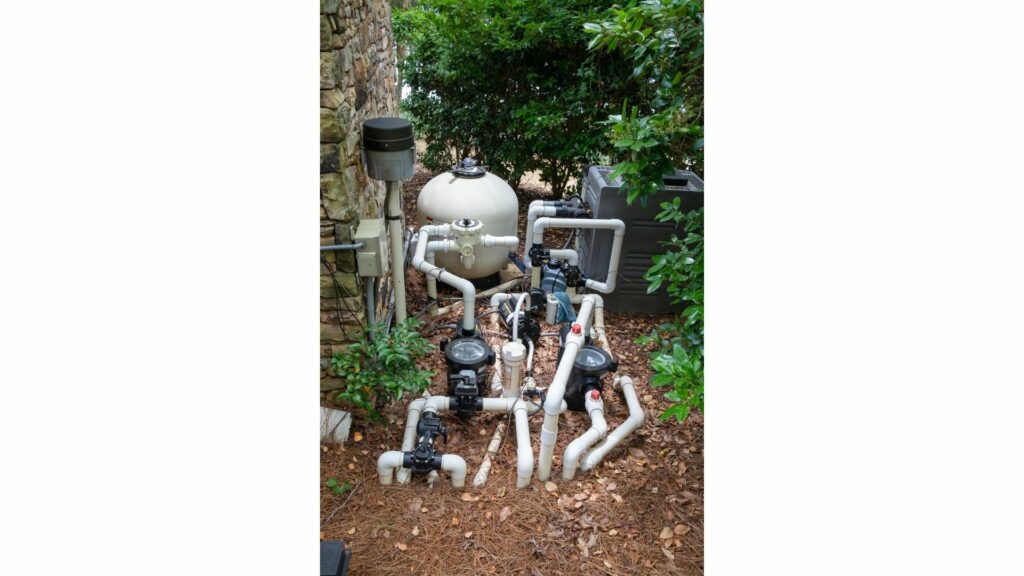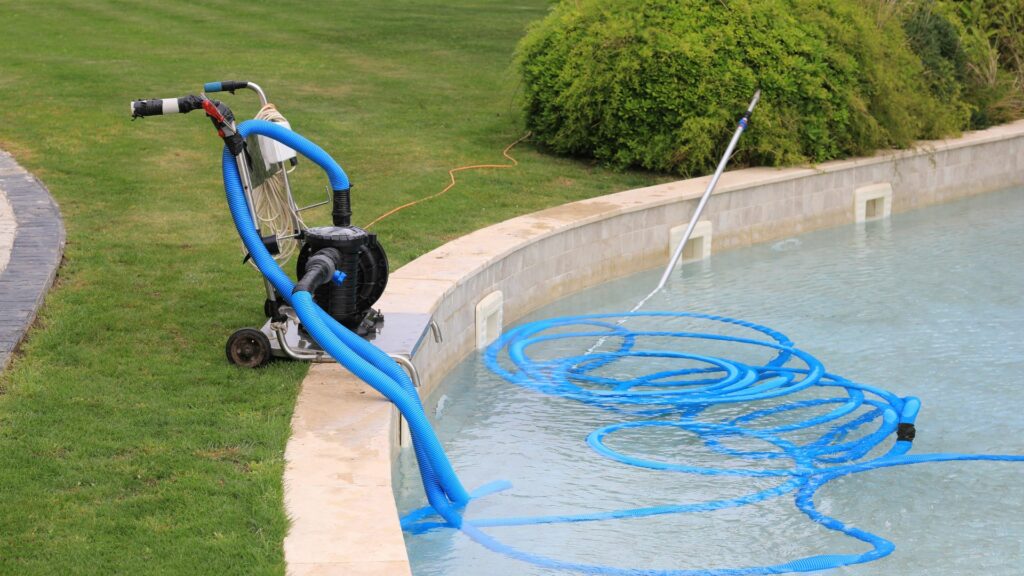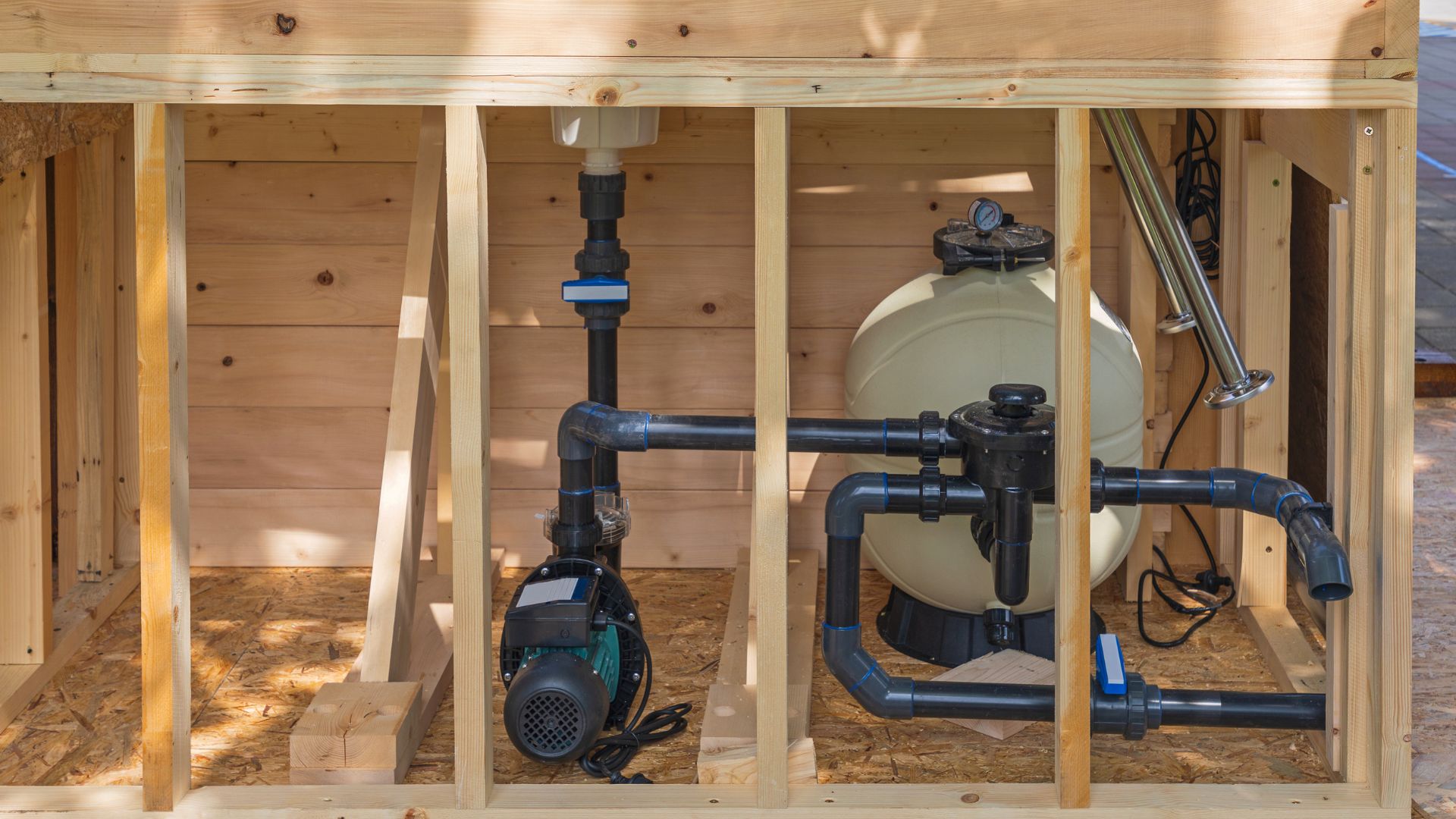A pool pump can cause trouble if you pair it with the wrong breaker size. Fires are not out of the question. The only way to protect your home is to identify the pump’s electrical draw. The guide below will show you what to do.
How Many Amps Does A Pool Pump Draw?
Pool Pump Amp Draw Chart
| HP | Watt | Volt | Amps |
| 1 | 745.7W | 120V | 7.76A |
| 1.5 | 1118.55W | 120V | 11.65A |
| ½ | 372.85W | 120V | 3.88A |
| 2 | 1491.4W | 120V | 15.53A |
| 3 | 2237.1A | 120V | 23.30A |
| ¾ | 559.27W | 120V | 5.85A |
Consider the following:
1). HP
The horsepower matters. Pool pumps are not all the same. Some are more powerful than others. Pumps with a greater HP will use more amps than their weaker, smaller counterparts. This affects the cost of running the pool. Stronger pumps are more expensive to operate.
2). Voltage
The voltage is fascinating because it doesn’t shape your energy bills in the way people assume. If your pump says’115/240,’ the device is reversible. It can work with 120V and 240V systems, and the energy consumption will seemingly change accordingly.
Don’t forget that dividing the watts by the volts gives you the amps. For instance, 1725W/230 is 7.5A. But if you divide 1725W by 115V, you get 15A. Does that mean a 115V pump is more expensive to run than its 230V counterpart?
After all, 115V gives you more amps. That conclusion is wrong. Yes, the amps change, but the watts are exactly the same. Even though you have 7.5 amps with a 230V system and 15 amps with its 115V counterpart, the pump is still consuming 1,725 watts.
Therefore, you can’t reduce energy consumption by increasing the voltage. That being said, higher voltages are more appealing because you can install thinner wires while minimizing line loss. These savings are too small to matter to the average consumer. But a contractor may highlight them while pointing out your long-term costs.
3). Start-Up Amps
The amps will tell you the breaker size. The breaker size matters because it allows the breaker to protect you. You don’t want to select a larger breaker. It won’t trip quickly enough. On the other hand, a small breaker will trip too quickly.
If you’re shopping for a pool pump and struggling to estimate the amp draw you will encounter, you should know that conventional pool pumps can run on a 20A circuit. In fact, they can also work with 15A circuits.
Keep in mind that most units are 10A. Even if you take the NEC’s rulings into account and multiply those 10 amps by 125 percent, you’re still looking at 12.5 amps, which a 15A circuit can accommodate.
But if that is true, why do experts recommend 20A circuits? Because the pump’s electrical draw spikes when it starts. Those 12.5 amps can quickly skyrocket to 17 amps, overwhelming the 15A circuit and starting a fire.
4). Pool Type
The type of pool is just as important as the pump’s HP. In fact, the pool type can influence the pump’s horsepower. Above-ground pools are aptly named. They sit above ground, and even though they share the attributes of an in-ground pool, their pumps have a lower flow rate.
In-ground pools are more likely to attract stronger pumps with higher electrical draws because they require so much equipment, including lights and chlorinators. Even if the in-ground pool has the same pump as an above-ground pool, you need a larger circuit for the in-ground pool.
The in-ground pool’s circuit must accommodate the pump as well as electrical equipment you rarely find in above-ground pools. The electrical draw for the other equipment matters because it affects the total load you expect the circuit to carry.
This is why contractors encourage the use of dedicated circuits. An in-ground pool is less likely to overload a dedicated circuit.
5). Filter
People don’t expect the pool filter to influence the pump’s amperage. They don’t realize that a pump deals with pressure, and a larger filter allows the unit to use fewer amps because it can run at lower pressures.
How To Calculate The Pool Pump Amp Draw?

You don’t calculate the pool pump’s amp draw. Check the label. Pumps have labels that show the voltage and amperage. Many electrical devices use watts to represent energy consumption. This forces consumers to turn the watts into amps.
But your pool pump eliminates that extra step by revealing the energy consumption in amps. If you have two voltage ratings, expect two amp ratings as well. For instance, if you see a voltage of ‘120/240’ and an amperage of ‘14/7,’ the unit will use 14 amps at 120V and 7 amps at 240V. You can apply either voltage depending on your setup.
Larger motors won’t give you this option. They expect you to use 240V. If you previously hired a contractor to configure the pool, but now you have questions about the voltage, check the electrical panel.
A double pole breaker points to 240V. Look for a pair of hot wires. Single pole breakers use one conductor. If you still have doubts, use a voltmeter.
You need to know the voltage because it affects your calculations. Some people want to determine the cost of running their pump, a task you achieve when you multiply the kiloWatts by the number of hours the pump runs per day and the price of each kilowatt.
You get the kilowatts when you divide the watts by 1000. And as you probably guessed, multiplying the voltage by the pump’s amps will give you the watts. As you can see, the voltage matters.
Why Is It Necessary To Know The Amp Draw Of Pool Pump?
The amp draw tells you the breaker size. You can’t identify a suitable breaker size for the pump without determining the number of amps the unit uses. The amp draw will also influence the extension cord you select.
People use extension cords to run above-ground pool pumps all the time. But you can start a fire if you buy a smaller gauge. You avoid such situations by finding the pump’s amps and using the information to select the correct gauge.
Things To Consider To Run Pool Pump Safely

- You should always consider the pump’s start-up amps
The pump’s electrical draw increases dramatically when the unit first starts. Eventually, the electrical draw falls back down. But the unit can quickly overwhelm the circuit during those initial moments.
Therefore, you shouldn’t base the breaker size on the running amps alone. Make sure the circuit is large enough to withstand the start-up amps. Otherwise, you will start a fire.
- Don’t pair the pool pump with a breaker of equal size.
The breaker size should exceed the pump’s amps. This is why contractors multiply the pump’s amps by 125 percent while calculating the breaker size.
A continuous load shouldn’t use a breaker’s total capacity. You only have 80 percent of the breaker’s rating at your disposal. This gives the circuit room to breathe. It can tolerate surges without overloading.
- Pool Equipment
The pump is not your only concern. Make sure you account for other pool equipment. Find a breaker large enough to run all the devices your pool requires, including the filters and chlorinators. The breaker size should exceed the pool’s total load.
- A large breaker won’t prevent a powerful pump from starting a fire if you select wires with a small gauge.
The gauge affects the conductor’s current carrying capacity. The wires should be thick enough to transmit the current the pump needs without overheating and melting.
This means matching the gauge to the breaker size. For instance, 20A breakers use 12AWG. You need 10AWG for a 30A breaker.
- Don’t forget to include GFCI protection.
You find GFCIs in places with a lot of moisture. GFCIs will prevent electrocution by cutting the power whenever electricity flows through the wrong medium.
For instance, if you throw an active dryer in a bathtub of water, the GFCI will trip. I want you to connect the pool pump to a GFCI outlet. If you don’t, an inspector may penalize you because you’ve failed to adhere to the NEC’s rules.
Related Post:


I dug a pond at my farm and it is full of water now but because of the clay, the water is still sovery muddy. I know I need to aereate the water but I don’t have electricity near the pond. But just temporalily, I want to use my Honda EU2200 to clear the water some.
i can’t decide whether to use a sump pump, some other pump or and air compressor to aereate. The pond is about 100 ft x 50 ft . Have you done a project like this?
Once I find a working aereation system I will install a pole for power.
Any advice?
Using your Honda EU2200 generator to temporarily aerate your muddy pond is a smart move. For this, you have a few options: a submersible sump pump for bottom aeration, a surface pump for surface movement, or an air compressor with a diffuser for adding oxygen through bubbles. Considering your pond’s size (100ft x 50ft), you may need multiple pumps or a larger capacity pump. Once you’ve improved water clarity, plan to install a permanent aeration system with a dedicated power source for long-term maintenance and water quality management.